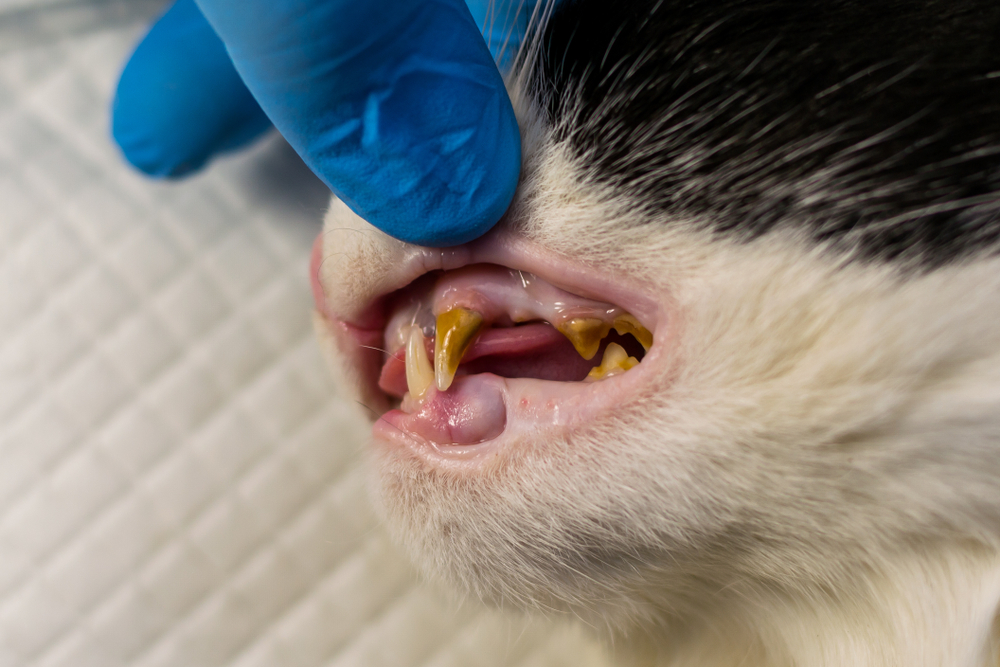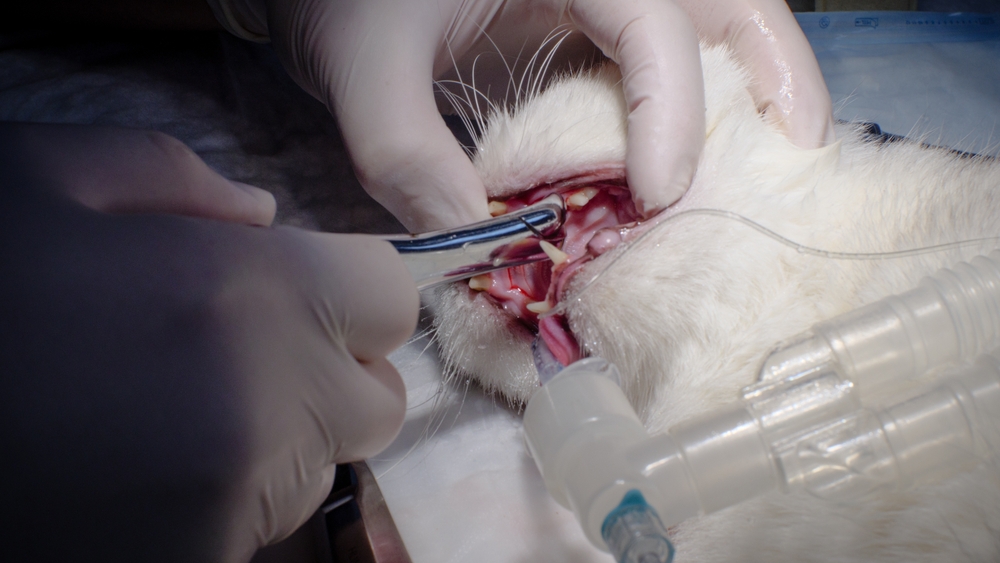
Feline tooth resorption is a common condition that affects more than 50% of cats older than 3 years of age and causes irreparable damage to the cat’s teeth. Our Livermore Family Pet Hospital team offers information about this extremely painful condition and explains how to know if your cat is affected.
Cat dental disease terminology
Tooth resorption differs from other dental issues that affect cats. The following are specific dental disease definitions:
- Tooth resorption — This process occurs when the tooth’s dentin erodes and is irreparably destroyed. Over time, all the affected tooth parts, from root to crown, may be involved. These lesions have also been called neck lesions, external odontoclastic resorptions, and feline odontoclastic resorptive lesions (FORLs).
- Periodontal disease — Periodontal disease occurs when bacteria invade under the cat’s gum line, damaging the tooth’s supporting structures.
- Feline stomatitis — This is an immune-mediated response to plaque.
- Cavities — Cavities occur when bacteria cause a fermentation process that results in enamel and dentin demineralization.
Cat tooth resorption types
Cat tooth resorption lesions are classified into two types:
- External resorption — External resorption, which is the most common, occurs when the tooth root structure breaks down and is subsequently lost. Categorizations include:
- Surface resorption — Surface resorption occurs secondary to minor trauma, and is reversible in some cases.
- Inflammatory resorption — Inflammatory resorption is likely triggered by factors such as periodontal disease.
- Replacement resorption — Replacement resorption occurs when dental hard tissue is resorbed and replaced by bone. These lesions seem less painful, since the sensitive tissue is not exposed.
- Internal resorption — Internal resorption, which occurs when the pulp tissue’s outer layer is affected, starts at the pulpal surface and extends externally.
Cat tooth resorption causes
No specific cause has been identified for tooth resorption in cats. Educated theories include:
- Periodontal disease — While periodontal disease may trigger some tooth resorption types, investigations of this theory mostly do not support a cause and effect relationship between tooth resorption and periodontal disease.
- Local pH changes — Human bulimic patients have similar lesions caused by low pH caustic stomach contents. One unconfirmed theory is that hairball regurgitation causes tooth resorption.
- Calicivirus — Calicivirus commonly causes gingivitis and may contribute to tooth resorption.
- Autoimmune response — Affected cats may have an autoimmune disease that causes their immune system to attack their teeth.
- Metabolic imbalances — Metabolic imbalances relating to calcium regulation may also be to blame.
Cat tooth resorption prevalence
All permanent teeth are susceptible to tooth resorption, but lower jaw premolars are most commonly affected. Tooth resorption rarely occurs in cats younger than 2 years of age, and most often lesions develop in cats between 4 and 6 years of age. Purebred cats, including Abyssinians, Siamese, Russian blue, Scottish fold, and Persians, seem to be affected younger. Other risk factors include cats who:
- Gulp their food, as opposed to chewing slowly
- Eat only table food
- Are female
- Drink municipal water
- Eat a raw-liver or low-calcium diet
- Live exclusively indoors
Cat tooth resorption stages
Intra-oral X-rays are necessary to diagnose and properly stage cat tooth resorption to help determine appropriate treatment strategies. Five stages are identified:
- Stage 1 — Mild dental hard tissue loss is present. Lesions are small and below the gingiva and can’t be visualized by looking in the cat’s mouth.
- Stage 2 — Moderate dental hard tissue loss is present, but lesions can’t be visualized without X-rays.
- Stage 3 — Resorption progresses into the pulp chamber, with most of the tooth remaining intact.
- Stage 4 — Extensive dental hard tissue loss affects most of the tooth.
- Stage 5 — Most of the tooth has been resorbed, leaving only a gum-covered bump.
Cat tooth resorption signs
Cats are excellent at hiding pain and will exhibit no overt clinical signs in most tooth resorption cases, especially when the resorption is below the gingival margin. This means that routine dental X-rays are critical to detect this condition. In cases where the resorption lesion is above the gingival margin, potential signs include:
- Hypersalivation
- Head shaking
- Sneezing
- Inappetence
- Oral bleeding
- Difficulty eating
Cat tooth resorption treatment

No treatment to prevent or stop tooth resorption progression is available. Current management strategies include:
- Conservative management — For cats whose resorption can be seen only on X-rays and who show no pain, the lesions are monitored clinically and by X-ray.
- Tooth extraction — When the entire tooth is affected, the crown and root are extracted.
- Crown amputation — In some cases, only the crown is extracted, leaving the root intact.
Regular veterinary dental examinations and X-rays are necessary to help detect cat tooth resorption, which can cause your pet significant pain. If you would like to schedule a dental appointment for your cat, contact our Livermore Family Pet Hospital, so we can ensure their pearly whites are clean and healthy.

